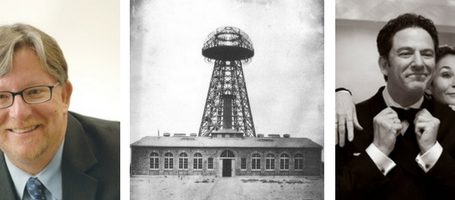 The Misunderstood Constitution – From May until September in 1787, 55 brilliant minds in the newly minted United States of America met daily in the old Pennsylvania State House to debate and draft what was to become the most important document in our history: the American Constitution. Today, 231 years later, our Constitution stands as the oldest surviving written constitution in the world, demonstrating its ability to endure for ages to come. This is even more remarkable when you consider that it was entirely the result of compromise; nothing in it was universally agreed upon.
The Misunderstood Constitution – From May until September in 1787, 55 brilliant minds in the newly minted United States of America met daily in the old Pennsylvania State House to debate and draft what was to become the most important document in our history: the American Constitution. Today, 231 years later, our Constitution stands as the oldest surviving written constitution in the world, demonstrating its ability to endure for ages to come. This is even more remarkable when you consider that it was entirely the result of compromise; nothing in it was universally agreed upon.
Despite this amazing history, however, the ignorant discourse that permeates social media makes clear that many people (including lawmakers and lawyers) don’t really understand the Constitution. In my view, understanding the Constitution is critical to informing and broadening our perspective and analysis of the social and political issues we face today. With that in mind, here are some thoughts that may be helpful.
Why do we need the Constitution? To answer this question, we must look at how the Constitution differs from other laws. The most basic answer is that unlike other laws, the Constitution is very difficult (although not impossible) to change. While Congress or a state legislature seeking to repeal or change a law it has passed can do so by a simple majority vote, changing the Constitution requires a vote of two-thirds of both the House of Representatives and the Senate, then ratification by three quarters of the states. (Ironically, this makes the Constitution anti-democratic.)
Why, then, in a country that prides itself on the principles of democracy and “majority rules,” would we choose to be governed by something that is so difficult to change? The simple answer, as opined by constitutional scholar Laurence Tribe, is that the Constitution makes sure that “short-term feelings don’t cause us to lose sight of our long-term values.”
What conduct does the Constitution govern? While the Constitution protects all American citizens, it is critical to understand that those protections apply only to actions of the government. Behavior of non-governmental actors (private citizens and businesses) need not comply with the Constitution. Thus, if someone is terminated from a private company for speaking ill of the boss, that person cannot rely on his or her First Amendment right of free speech because that right does not apply to conduct between private actors. Conversely, if a public employee is terminated for criticizing his or her supervisor, that person could rely on his or her First Amendment right of free speech to challenge that termination.
To fill that void, Congress and state legislatures have enacted laws to enforce some of the Constitution’s protections (e.g., civil rights laws that prohibit private actors from discriminating against others based on race, sex, religion, etc.), but these laws are much narrower than the sweeping protections afforded under the Constitution.
Why is separation of powers important? The framers of the Constitution recognized that in times of crisis, there would be a great temptation for a nation to centralize its power. To combat this risk, the Constitution requires approval of two branches before the government can undertake any material action. We see this every day: laws must have the approval of both the legislative and executive branch before going into effect; enforcement of a law requires the executive branch (via law enforcement) to bring an action and the courts to convict; to get a search warrant, we need the executive branch to seek it and the judiciary to approve it.
The purpose of this concept and protection is critical for us to remember – particularly in those trying moments when we feel that “gridlock” is preventing us from moving forward – as that gridlock is a fundamental part of ensuring that the seeds of tyranny cannot easily grow.
Why are only some individual rights included? As Americans, we deem the rights contained in the Constitution (such as freedom of speech and religion), along with protections it grants (such as those against unreasonable search and seizure and cruel and unusual punishment), as so fundamental to our values that we will not permit them to be taken away by a simple majority vote of the legislature. This safeguard necessarily protects those citizens who may find themselves in the minority from the “tyranny of the majority” as described more fully by James Madison in Federalist Papers No. 51. That is the true beauty of our Constitution, in that it ensures both that a minority of the population can’t bind the majority, while at the same time ensuring that the majority of the population can’t infringe on the constitutional rights of the minority – at least without a fight.
What is the role of the courts with regard to the Constitution? Federal courts, and ultimately the United States Supreme Court, have the role and responsibility to interpret the Constitution (state courts play the same role for state constitutions). Understandably, many wonder why after all these years there are still so many points that need to be interpreted (and sometimes reinterpreted) in a document that has remained basically unchanged for over two centuries.
One reason is that many important issues are simply not addressed in the Constitution (e.g., executive privilege and firing of cabinet members). Another reason is that the Constitution was purposefully written in broad language and doesn’t define many of the terms it uses: what is “cruel and unusual punishment,” “due process,” or “speech”? Most importantly, however, courts need to interpret the Constitution because no right it gives us is absolute: for example, while we are guaranteed freedom of speech, we have no right to falsely yell “Fire!” in a crowded movie theater.
Since judicial review of the Constitution is our most important safeguard, many debates rage over the different judicial philosophies that judges apply when interpreting it – and the sometimes inconsistent results those differing philosophies produce. Thus, the Supreme Court’s interpretation of the Constitution has led to some of the greatest triumphs (Brown v. Board of Education) and failures (Dred Scott) of this country’s history.
I hope that this overly simplistic roadmap of the Constitution serves as a refresher and gives some context to its truly amazing role in our everyday lives. If you’re inspired to learn more, check out this 2016 talk by Dean Erwin Chemerinsky (formerly of the University of California Irvine School of Law, now at Berkeley Law) called “The Constitution: What Students Should Know.”
I look forward to hearing your thoughts.
AROUND TOWN
Spice Room – A hairnet may not be my best look, but it was worth wearing last Friday in exchange for a tour of the incredible operation Castella Imports runs in Hauppauge. Under the leadership of CEO Chris Valsamos, Castella is a Long Island success story of how a local business can achieve national exposure and continue to grow each year. From the Spice Room (where garlic powder and ground pepper were being packaged) to the Wet Pack Room (where best-selling olives are packaged throughout the day), Castella’s 125,000 sq. ft. warehouse/manufacturing building offered a fascinating inside look at why Castella was recently honored with a Business Achievement Award from HIA-LI. I’m looking forward to the company’s grand opening of a new warehouse in the Heartland Industrial Park in Deer Park later this year and working with Chris on important HIA-LI initiatives.
Construction Zone – I welcomed my good friends Alex Badalamenti, President and CEO of bld architecture, and Jack Kulka, President and Founder of the Kulka Group, as my guests on CMM Live this past Tuesday for an episode focused on architecture and construction on our island. Alex is an incredibly talented architect with a unique background in buildings of historic significance and landmark status. We had a great discussion on everything from the impact of the 2008 recession on his business to his strategies for attracting talent. I especially enjoyed discussing the origins of today’s architect as a “master builder.”
I also had a great time catching up with Jack about his experiences growing up in the Bronx, his career path from engineering to essentially founding “construction management” services on Long Island and completely changing the industry. I enjoyed hearing about his role as one of the founders of what is today’s HIA-LI and the organization’s evolution over the years, as well as his innovative work on the Amneal Pharmaceuticals facility in Brookhaven.
Growing Your Business – Yesterday morning, I had the pleasure of giving welcoming remarks at the Business Growth Executive Breakfast hosted by HIA-LI. The topic, “How to Get Money and Incentives,” was moderated by my good friend and fellow HIA-LI board member Anthony Manetta of HB Solutions, LLC and presented by a star-studded panel that included Barry Greenspan of Empire State Development, John J. Keating of PSEG, Kelly Morris of the Suffolk County IDA, and Lyle Sclair of National Grid. Discussing how to keep Long Island business growing is always music to my ears.



